A Conceptual Framework for Large-Scale Event Perception Evaluation with Spatial-Temporal Scales in Sustainable Smart Cities
Abstract
:1. Introduction
2. Literature Review
“Event management refers to the targeting and managing of designed public events geared to invest emotional energies and economic resources to selected goals” [12] (p. 1).
3. Materials and Methods
- Level I. Holistic image: stormy sky. (Features: dominant color/tone, texture.)
- Level II. Structures: Light clusters, phenomena clusters, precipitation clusters, cloud clusters Features used: type, name. )
- Level III. Objects: sky, wind, clouds, sun, ray, lightning, tornado, precipitation, land, buildings Features used: type, name, size, color, texture, location, situation.
4. Results and Discussion
- Stability/variability—the lack of wind/strong wind, the lack of cloud/chaos in clouds;
- Threats/safety—presence/absence of dark clouds, tornado, lightening;
- Chances—presence/absence of rays, light; dark clouds flying away; sun above the clouds/sun behind the clouds;
- Satisfaction/unsatisfaction—clear sky, sun/cloudy sky; absence of sun;
- Clarity/lack of clarity,–clear sky, sky with light clouds/clouds; dark colors;
- Sustainability/confusion,–balance in colors, even clouds dispersion/lack of even dispersion.
5. Conclusions
Funding
Institutional Review Board Statement
Informed Consent Statement
Data Availability Statement
Conflicts of Interest
Appendix A
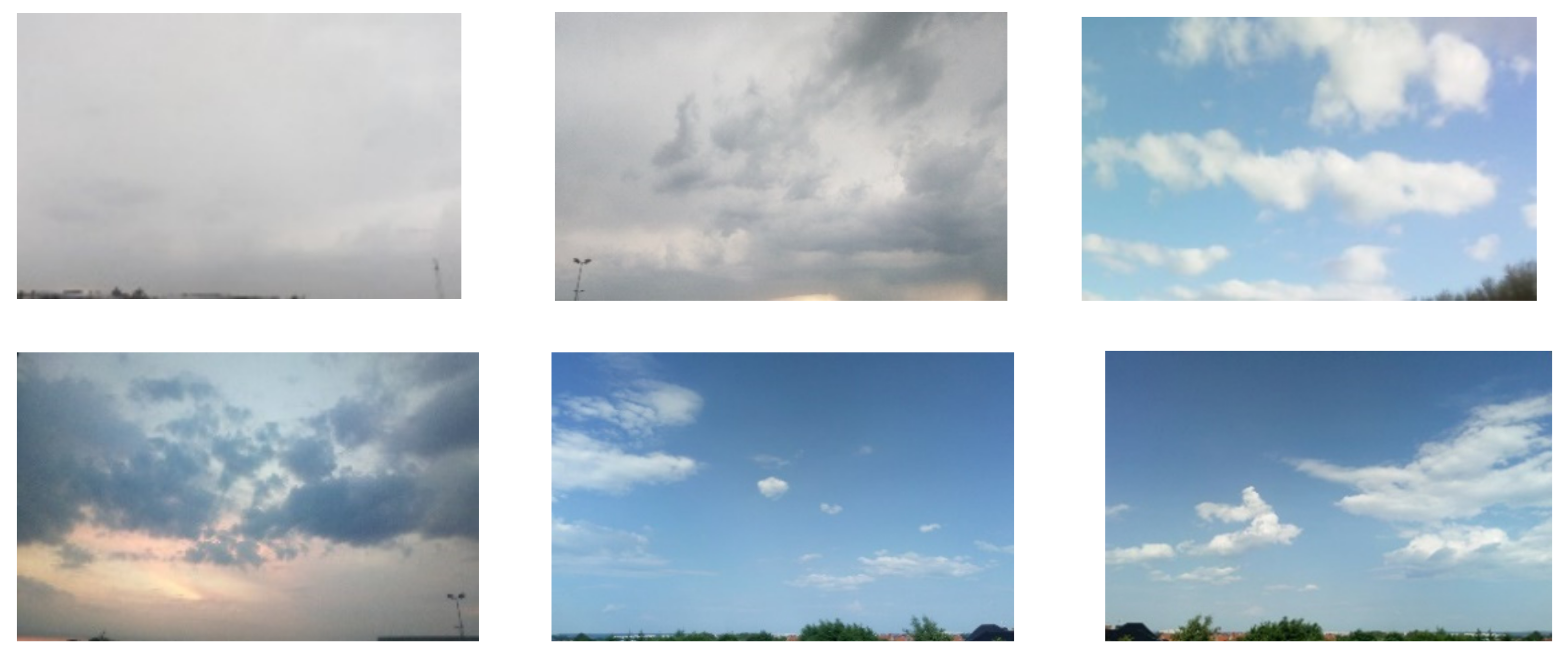

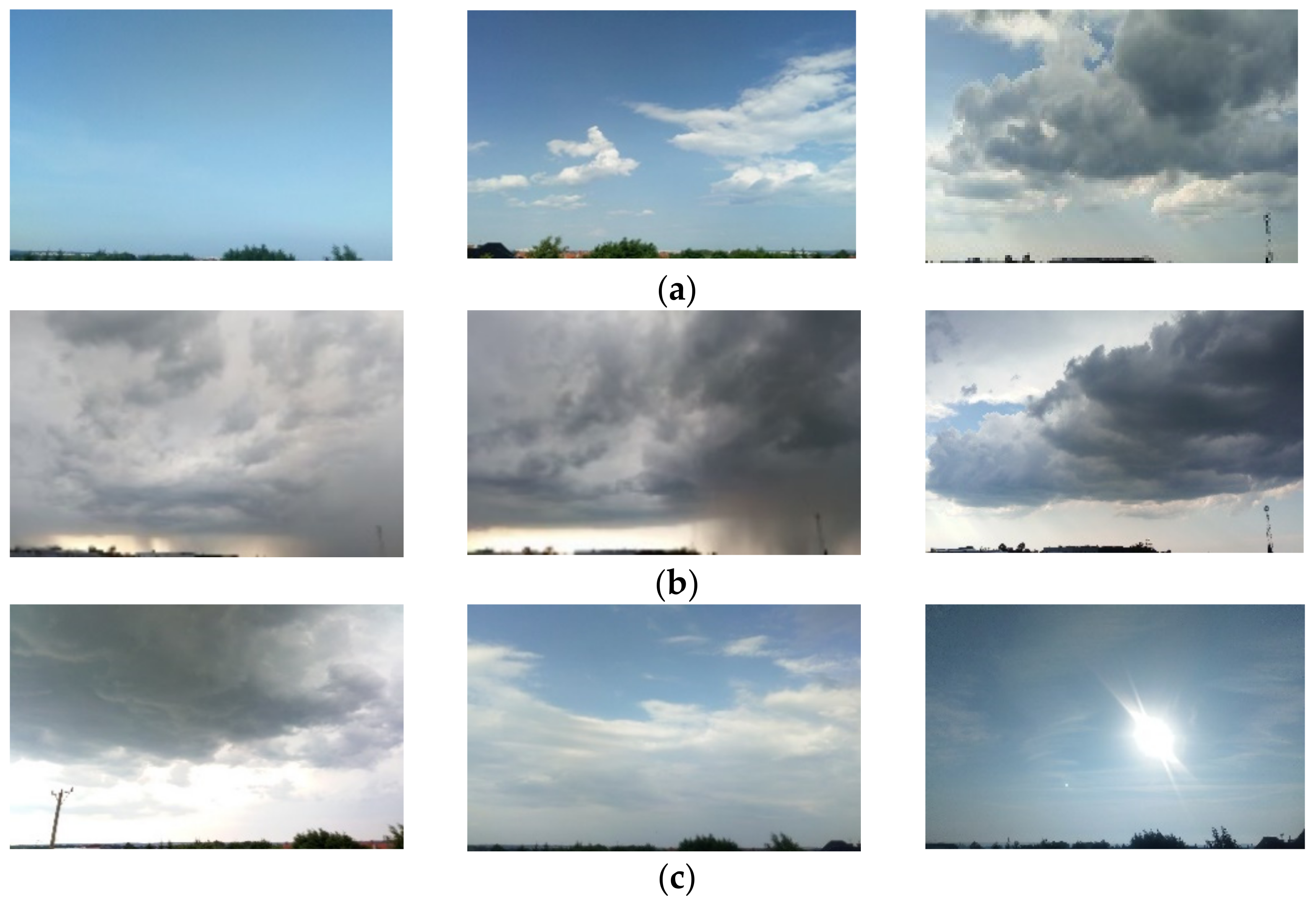
References
- Van Bodegom, P.; Li, T.; Fabien, P. Special Issue editorial. Smart City Development and Remote Sensing Application in Urban Ecology. Remote Sens. 2021. Available online: https://0-www-mdpi-com.brum.beds.ac.uk/journal/remotesensing/special_issues/Smart_City_Development_and_RS_Application_Urban_Ecology (accessed on 2 February 2021).
- Beza, B.; Hernández-Garcia, J. From placemaking to sustainability citizenship: An evolution in the understanding of community realised public spaces in Bogotá’s informal settlements. J. Place Manag. Dev. 2018, 11, 192–207. [Google Scholar] [CrossRef]
- Lang, S. The Role of Placemaking in Sustainable Planning: A Case Study of the East Side of Cleveland, Ohio. Master’s Thesis, 2017. Available online: https://scholarworks.umass.edu/masters_theses_2/472 (accessed on 11 February 2021).
- Pilipczuk, O. Sustainable Smart Cities and Energy Management: The Labor Market Perspective. Energies 2020, 13, 6084. [Google Scholar] [CrossRef]
- Wesener, A.; Fox-Kämper, R.; Sondermann, M.; Münderlein, D. Placemaking in Action: Factors That Support or Obstruct the Development of Urban Community Gardens. Sustainability 2020, 12, 657. [Google Scholar] [CrossRef] [Green Version]
- Turvey, R. Place-making and sustainability in Ontario’s small urban municipalities. Int. J. Urban Sustain. Dev. 2017, 9, 286–299. [Google Scholar] [CrossRef]
- Global Risk Report 2020. Available online: http://www3.weforum.org/docs/WEF_Global_Risk_Report_2020.pdf (accessed on 10 February 2021).
- Dunkel, A.; Andrienko, G.; Andrienko, N.; Burghardt, D.; Hauthal, E.; Purves, R. A conceptual framework for studying collective reactions to events in location-based social media. Int. J. Geogr. Inf. Sci. 2019, 33, 780–804. [Google Scholar] [CrossRef]
- Marsden, T. Sustainable place-making for sustainability science: The contested case of agri-food and urban–rural relations. Sustain. Sci. 2013, 8, 213–226. [Google Scholar] [CrossRef]
- Jabłoński, A. (Ed.) Sustainable Business Models; MDPI: Basel, Switzerland, 2019; Available online: https://0-www-mdpi-com.brum.beds.ac.uk/journal/sustainability/specialissues/sustainablebusinessmodels (accessed on 12 February 2021).
- Golubchikov, O.; Thornbush, M. Artificial Intelligence and Robotics in Smart City Strategies and Planned Smart Development. Smart Cities 2020, 3, 1133–1144. [Google Scholar] [CrossRef]
- What Is Event Management? SAGE Publications Ltd.: London, UK, 2013; pp. 1–12. Available online: https://0-www-doi-org.brum.beds.ac.uk/10.4135/9781446270059.n1 (accessed on 26 February 2021).
- Rojek, C. What are the main types of event? In Event Power: How Global Events Manage and Manipulate; SAGE Publications Ltd.: London, UK, 2013; Available online: https://0-www-doi-org.brum.beds.ac.uk/10.4135/9781446270059.n2 (accessed on 26 February 2021).
- Richards, G.; Palmer, R. Why Cities Need to Be Eventful? Eventful Cities, 1st ed.; First Published; Imprint Routledge: London, UK, 2010; pp. 1–37. [Google Scholar]
- Cudny, W. Urban Events, Place Branding and Promotion, Place Event Marketing; Routledge: London, UK, 2019. [Google Scholar]
- Müller, M. What Makes an Event a Mega-Event? Definitions and Sizes. Leis. Stud. 2015, 34, 627–642. [Google Scholar] [CrossRef] [Green Version]
- Zacks, J.M.; Speer, N.K.; Swallow, K.M.; Braver, T.S.; Reynolds, J.R. Event perception: A mind-brain perspective. Psychol. Bull. 2007, 133, 273–293. [Google Scholar] [CrossRef] [PubMed] [Green Version]
- Zacks, J.M.; Tversky, B. Event structure in perception and conception. Psychol. Bull. 2001, 127, 3–21. [Google Scholar] [CrossRef] [PubMed] [Green Version]
- Shipley, T.F.; Zacks, J.M. (Eds.) Understanding Events: From Perception to Action; Oxford Series in Visual Cognition; Oxford University Press, 2008; Volume 4, Available online: https://0-doi-org.brum.beds.ac.uk/10.1093/acprof:oso/9780195188370.001.0001 (accessed on 12 February 2021).
- Griffiths, T.L.; Abbott, J.; Hsu, A. Exploring Human Cognition Using Large Image Databases. Top. Cogn. Sci. 2016, 8, 569–588. [Google Scholar] [CrossRef] [PubMed] [Green Version]
- Wimmer, M.; Maras, K.; Robinson, E.; Doherty, M.J.; Pugeault, N. How Visuo-Spatial Mental Imagery Develops: Image Generation and Maintenance. PLoS ONE 2015, 10, e0142566. [Google Scholar] [CrossRef] [PubMed] [Green Version]
- Peer, M.; Ron, Y.; Monsa, R.; Arzy, S. Processing of different spatial scales in the human brain. eLife 2019, 8, e47492. [Google Scholar] [CrossRef]
- Kosslyn, S.M. Image and Brain: The Resolution of the Imagery Debate; MIT Press: Cambridge, MA, USA, 1994. [Google Scholar]
- Kosslyn, S.M. Mental image. In Sensorium: Embodied Experience, Technology, and Contemporary Art; Jones, C.A., Ed.; MIT Press: Cambridge, MA, USA, 2006. [Google Scholar]
- Ganis, G.; Shendan, H. Visual Imagery. Wiley Interdisciplinary Reviews: Cognitive Science; John Wiley & Sons, Ltd.: Hoboken, NJ, USA, 2010. [Google Scholar]
- Walmsley, T.; Rose, A.; Wei, D. The Impacts of the Coronavirus on the Economy of the United States. Econ. Dis. Clim. Chang. 2020, 5, 1–52. [Google Scholar] [CrossRef]
- Maliszewska, M.; Mattoo, A.; van der Mensbrugghe, D. The Potential Impact of COVID-19 on GDP and Trade: A Preliminary Assessment; World Bank Policy Research Working Paper; The World Bank: Washington, DC, USA, 2020. [Google Scholar]
- Nagaj, R.; Korpysa, J. Impact of COVID-19 on the Level of Energy Poverty in Poland. Energies 2020, 13, 4977. [Google Scholar] [CrossRef]
- Global Economic Prospects. 2021. Available online: https://www.worldbank.org/en/publication/global-economic-prospects (accessed on 12 February 2021).
- Mahmood, S.; Hussain, T.; Mahmood, F.; Ahmad, M.; Majeed, A.; Beg, B.M.; Areej, S. Attitude, Perception, and Knowledge of COVID-19 among General Public in Pakistan. Front. Public Health 2020, 8, 602434. [Google Scholar] [CrossRef]
- Mondino, E.; Di Baldassarre, G.; Mård, J.; Ridolfi, E.; Rusca, M. Public perceptions of multiple risks during the COVID-19 pandemic in Italy and Sweden. Sci. Data 2020, 7, 434. [Google Scholar] [CrossRef]
- Delloite. The Social Impacts of COVID-19 Reset Not Restart: Taking Advantage of a Crisis for Social Change. 2020. Available online: https://www2.deloitte.com/content/dam/Deloitte/au/Documents/Economics/deloitte-au-dae-social-impact-of-covid-19-100820.pdf (accessed on 9 February 2021).
- Płomecka, M.; Jawaid, A.; Radziński, P.; Gobbi, S.; Neckels, R.; Baranczuk, Z. Mental Health Impact of COVID-19: A global study of risk and resilience factors. MedRxiv 2020. [Google Scholar] [CrossRef]
- Semo, B.; Frissa, S. The Mental Health Impact of the COVID-19 Pandemic: Implications for Sub-Saharan Africa. Psychol. Res. Behav. Manag. 2020, 13, 713–720. [Google Scholar] [CrossRef]
- Schäfer, S.; Sopp, M.; Schanz, C.; Staginnus, M.; Göritz, A.; Michael, T. Impact of COVID-19 on Public Mental Health and the Buffering Effect of a Sense of Coherence. Psychother. Psychosom. 2020, 89, 386–392. [Google Scholar] [CrossRef]
- The Impact of Covid-19 on Global Mental Health a Brief 2020, United for Global Mental Health. Available online: https://unitedgmh.org/sites/default/files/2020-09/The%2BImpact%2BOf%2BCovid-19%2BOn%2BGlobal%2BMental%2BHealth%2BReport.pdf (accessed on 12 February 2021).
- Morgül, E.; Kallitsoglou, A.; Essau, C. Psychological effects of the COVID-19 lockdown on children and families in the UK. Rev. Psicol. Clínica Niños Adolesc. 2020, 7, 42–48. [Google Scholar] [CrossRef]
- Basiago, A.D. Methods of defining “sustainability”. Sustain. Dev. 1995, 3, 109–119. [Google Scholar] [CrossRef]
- Pope, J.; Annandale, D.; Morrison-Saunders, A. Conceptualising sustainability assessment. Environ. Impact Assess. Rev. 2004, 24, 595–616. [Google Scholar] [CrossRef] [Green Version]
- Gibson, R.B. Beyond the pillars: Sustainability assessment as a framework for effective integration of social, economic and ecological considerations in significant decision-making. J. Environ. Assess. Policy Manag. 2006, 8, 259–280. [Google Scholar] [CrossRef]
- Waas, T.; Hugé, J.; Verbruggen, A.; Wright, T. Sustainable development: A bird’s eye view. Sustainability 2011, 3, 1637–1661. [Google Scholar] [CrossRef] [Green Version]
- Moldan, B.; Janoušková, S.; Hák, T. How to understand and measure environmental sustainability: Indicators and targets. Ecol. Indic. 2012, 17, 4–13. [Google Scholar] [CrossRef]
- Schoolman, E.D.; Guest, J.S.; Bush, K.F.; Bell, A.R. How interdisciplinary is sustainability research? Analyzing the structure of an emerging scientific field. Sustain. Sci. 2012, 7, 67–80. [Google Scholar] [CrossRef]
- Boyer, R.; Peterson, N.; Arora, P.; Caldwell, K. Five approaches to social sustainability and an integrated way forward. Sustainability 2016, 8, 878. [Google Scholar] [CrossRef] [Green Version]
- Stirling, A. The appraisal of sustainability: Some problems and possible responses. Local Environ. 1999, 4, 111–135. [Google Scholar] [CrossRef]
- Lehtonen, M. The environmental-social interface of sustainable development: Capabilities, social capital, institutions. Ecol. Econ. 2004, 49, 199–214. [Google Scholar] [CrossRef]
- Zijp, M.C.; Heijungs, R.; van der Voet, E.; Van de Meent, D.; Huijbregts, M.A.J.; Hollander, A.; Posthuma, L. An identification key for selecting methods for sustainability assessments. Sustainability 2015, 7, 2490–2512. [Google Scholar] [CrossRef] [Green Version]
- Arushanyan, Y.; Ekener, E.; Moberg, Å. Sustainability assessment framework for scenarios—SAFS. Environ. Impact Assess. Rev. 2017, 3, 23–34. [Google Scholar] [CrossRef]
- Ghavampour, E.; Vale, B. Revisiting the “Model of Place”: A Comparative Study of Placemaking and Sustainability. Urban Plan. 2019, 4, 196–206. [Google Scholar] [CrossRef]
- Richmond, L.; Zacks, J. Event Perception. 2018. Available online: https://www.oxfordbibliographies.com/view/document/obo-9780199828340/obo-9780199828340-0215.xml (accessed on 11 February 2021).
- Zacks, J. Event Perception. Scholarpedia 2008, 3, 3837. [Google Scholar] [CrossRef]
- Radvansky, G.A.; Zacks, J.M. Event perception. Wiley Interdiscip. Rev. Cogn. Sci. 2011, 2, 608–620. [Google Scholar] [CrossRef]
- Richmond, L.; Gold, D.; Zacks, J. Event Perception: Translations and Applications. J. Appl. Res. Mem. Cogn. 2017, 6, 111–120. [Google Scholar] [CrossRef] [PubMed]
- Huff, M.; Papenmeier, F. Event perception: From event boundaries to ongoing events. J. Appl. Res. Mem. Cogn. 2017, 6, 129–132. [Google Scholar] [CrossRef] [Green Version]
- Lee, E.H.; Kim, J. Development of New Inter-Event Time Definition Technique in Urban Areas. KSCE J. Civ. Eng. 2018, 22. [Google Scholar] [CrossRef]
- Joo, J.; Lee, J.; Kim, J.H.; Jun, H.; Jo, D. Inter-Event Time Definition Setting Procedure for Urban Drainage Systems. Water 2014, 6, 45–58. [Google Scholar] [CrossRef] [Green Version]
- Pilipczuk, O.; Nowakowski, M. Opinion Acquisition with Spatial Picture Measurement Scales. In Informatyka i Zarządzanie na Przełomie Wieków: Metody, Narzędzia, Systemy, Zastosowania; Parys, T., Ed.; ELIPSA: Warszaw, Poland, 2019; pp. 468–478. [Google Scholar]
- Müller-Seitz, G.; Schüßler, E. From event management to managing events. A process perspective on organized and unexpected field-level events. Managementforschung 2013, 23, 193–226. [Google Scholar]
- Gajdzik, B.; Grabowska, S.; Saniuk, S.; Wieczorek, T. Sustainable Development and Industry 4.0: A Bibliometric Analysis Identifying Key Scientific Problems of the Sustainable Industry 4.0. Energies 2020, 13, 4254. [Google Scholar] [CrossRef]
- Arvor, D.; Belgiu, M.; Falomir, Z.; Mougenot, I.; Durieux, L. Ontologies to interpret remote sensing images: Why do we need them? GIScience Remote Sens. 2019, 56, 911–939. [Google Scholar] [CrossRef] [Green Version]
- Fuhr, T.; Socher, G.; Scheering, C.; Sagerer, G. A Three-Dimensional Spatial Model for the Interpretation of Image Data. In Proceedings of the IJCAI-95 Workshop on Representation and Processing of Spatial Expressions, Montreal, QC, Canada, 20–25 August 1995; pp. 93–102. [Google Scholar]
- Bloch, I. Fuzzy spatial relationships for image processing and interpretation: A review. Image Vis. Comput. 2005, 23, 89–110. [Google Scholar] [CrossRef]
- Grishin, V.; Sula, A.; Ulieru, M. Pictorial analysis: A multi-resolution data visualization approach for monitoring and diagnosis of complex systems. Inf. Sci. 2003, 152, 1–24. [Google Scholar] [CrossRef]
- Hu, Y.; Gao, S.; Janowicz, K.; Yu, B.; Li, W.; Prasad, S. Extracting and understanding urban areas of interest using geotagged photos. Comput. Environ. Urban Syst. 2015, 54, 240–254. [Google Scholar] [CrossRef]
- Wang, W.; Stewart, K. Spatiotemporal and semantic information extraction from web news reports about natural hazards. Comput. Environ. Urban Syst. 2015, 50, 30–40. [Google Scholar] [CrossRef]
- Vasseur, L.; Thornbush, M.; Plante, S. Gender-Based Experiences and Perceptions after the 2010 Winter Storms in Atlantic Canada. Int. J. Environ. Res. Public Health 2015, 12, 12518–12529. [Google Scholar] [CrossRef] [Green Version]
- Cai, Z.; Zheng, S.; Huang, Y.; Zhang, X.; Qiu, Z.; Huang, A.; Wu, K. Emotional and Cognitive Responses and Behavioral Coping of Chinese Medical Workers and General Population during the Pandemic of COVID-19. Int. J. Environ. Res. Public Health 2020, 17, 6198. [Google Scholar] [CrossRef]
- Richardson, D.; Spivey, M.; Barsalou, L.; McRae, K. Spatial representations activated during real-time comprehension of verbs. Cogn. Sci. 2003, 27, 767–780. [Google Scholar] [CrossRef]
- Kobrinskii, B. Simvolno-obraznyi podchod v iskusstvennom intellekte. Fiz-mat Lit. 2000, 2, 601–608. [Google Scholar]
- Kobrinskii, B. Obraznye riady kak element bazy znanii. In Proceedings of the “Iskusstvennyi Intelekt Segodnya–Problemy i Perspektivy” Conference, Moscow, Russia, 4–5 December 2007; pp. 393–397. [Google Scholar]
- Chen, J.; Dowman, I.; Li, S.; Li, Z.; Madden, M.; Mills, J.; Paparoditis, N.; Rottensteiner, F.; Sester, M.; Trinder, J.; et al. Information from Imagery: ISPRS Scientific Vision and Research Agenda. ISPRS J. Photogramm. Remote Sens. 2016, 115, 3–21. [Google Scholar] [CrossRef] [Green Version]
- Kuhn, W.; Raubal, M.; Gardenfors, P. Editorial: Cognitive Semantics and Spatio-Temporal Ontologies. Spat. Cogn. Comput. 2007, 7, 3–12. [Google Scholar] [CrossRef]
- Bhatta, B. Remote Sensing and GIS; Oxford University Press: New Delhi, India, 2008; pp. 278–289. [Google Scholar]
- Huang, H.; Chen, J.; Li, Z.; Gong, F.; Chen, N. Ontology-Guided Image Interpretation for GEOBIA of High Spatial Resolution Remote Sense Imagery: A Coastal Area Case Study. ISPRS Int. J. Geo-Inf. 2017, 6, 105. [Google Scholar] [CrossRef] [Green Version]
- Jenson, J. Remote Sensing of the Environment, 2nd ed.; Pearson Prentice Hall: Upper Saddle River, NJ, USA, 2007. [Google Scholar]
- Neto, S.L.; Wangenheim, A.V.; Comunello, E.; Pereira, E. Methodology for Automatic Observation of Sky Patterns. 2009. Available online: https://www.semanticscholar.org/paper/Methodology-for-Automatic-Observation-of-sky-Neto-Wangenheim/bd146c108e42805c41c0a73cdad50355b65966a2 (accessed on 8 February 2021).
- Bostrom, A.; Morss, R.; Lazo, J.; Demuth, J.; Lazrus, H.; Hudson, R. A Mental Models Study of Hurricane Forecast and Warning Production, Communication, and Decision-Making. Weather Clim. Soc. 2016, 8, 111–129. [Google Scholar] [CrossRef]
- Trilok, J. Concept of Happy City: The Smart Cities of the Future. SSRN Electron. J. 2019. [Google Scholar] [CrossRef]
- The Global Happiness Council. Global Happiness Policy Report 2018; The Global Happiness Council, Sustainable Development Solutions Network: New York, NY, USA, 2018. [Google Scholar]
- Montgomery, C. Happy City: Transforming Our Lives through Urban Design Best Seller; Farrar, Straus and Giroux: New York, NY, USA, 2013. [Google Scholar]
- Papageorgiou, K.; Singh, P.K.; Papageorgiou, E.; Chudasama, H.; Bochtis, D.; Stamoulis, G. Fuzzy Cognitive Map-Based Sustainable Socio-Economic Development Planning for Rural Communities. Sustainability 2020, 12, 305. [Google Scholar] [CrossRef] [Green Version]
- Lourdel, N.; Gondran, N.; Laforest, V.; Debray, B.; Brodhag, C. Sustainable development cognitive map: A new method of evaluating student understanding. Int. J. Sustain. High. Educ. 2007, 8, 170–182. [Google Scholar] [CrossRef]
- Liu, L.; Zhou, B.; Zhao, J.; Brent, D. Ryan C-IMAGE: City cognitive mapping through geo-tagged photos. GeoJournal 2016, 81, 817–861. [Google Scholar] [CrossRef] [Green Version]
- Ladeira, M.; Ferreira, F.; Ferreira, J.; Fang, W.; Falcão, P.F.; Rosa, Á.A. Exploring the determinants of digital entrepreneurship using fuzzy cognitive maps. Int. Entrep. Manag. J. 2019, 15, 1077–1101. [Google Scholar] [CrossRef]
- Peter, E.C., Jr. Perception and Age. Gerontologist 1967, 7, 73–77. [Google Scholar] [CrossRef]
- Kozhevnikov, M.; Kosslyn, S.; Shephard, J. Spatial versus object visualizers: A new characterization of visual cognitive style. Mem. Cogn. 2005, 33, 710–726. [Google Scholar] [CrossRef] [Green Version]
- Shorey, S.; Ang, E.; Yamina, A.; Tam, C. Perceptions of public on the COVID-19 outbreak in Singapore: A qualitative content analysis. J. Public Health 2020, 42, 665–671. [Google Scholar] [CrossRef] [PubMed]
- Bruine de Bruin, W. Age Differences in COVID-19 Risk Perceptions and Mental Health: Evidence from a National, U.S. Survey Conducted in March 2020. J. Gerontol. Ser. B 2021, 76, e24–e29. [Google Scholar] [CrossRef] [PubMed]
- Lanciano, T.; Graziano, G.; Curci, A.; Costadura, S.; Monaco, A. Risk Perceptions and Psychological Effects during the Italian COVID-19 Emergency. Front. Psychol. 2020, 11, 580053. [Google Scholar] [CrossRef] [PubMed]
- Stutzer, A. Happiness and public policy: A procedural perspective. Behav. Public Policy 2020, 4, 210–225. [Google Scholar] [CrossRef] [Green Version]
- Adler, A.; Seligman, M. Using wellbeing for public policy: Theory, measurement, and recommendations. Int. J. Wellbeing 2016, 6, 1–35. [Google Scholar] [CrossRef] [Green Version]
- Malek, J.A.; Lim, S.B.; Yigitcanlar, T. Social Inclusion Indicators for Building Citizen-Centric Smart Cities: A Systematic Literature Review. Sustainability 2021, 13, 376. [Google Scholar] [CrossRef]
- Zakzak, L. Citizen-centric Smart City Development: The Case of Smart Dubai’s “Happiness Agenda”. In Proceedings of the 20th Annual International Conference on Digital Government Research, Dubai, United Arab Emirates, 18–20 June 2019; pp. 141–147. [Google Scholar] [CrossRef]

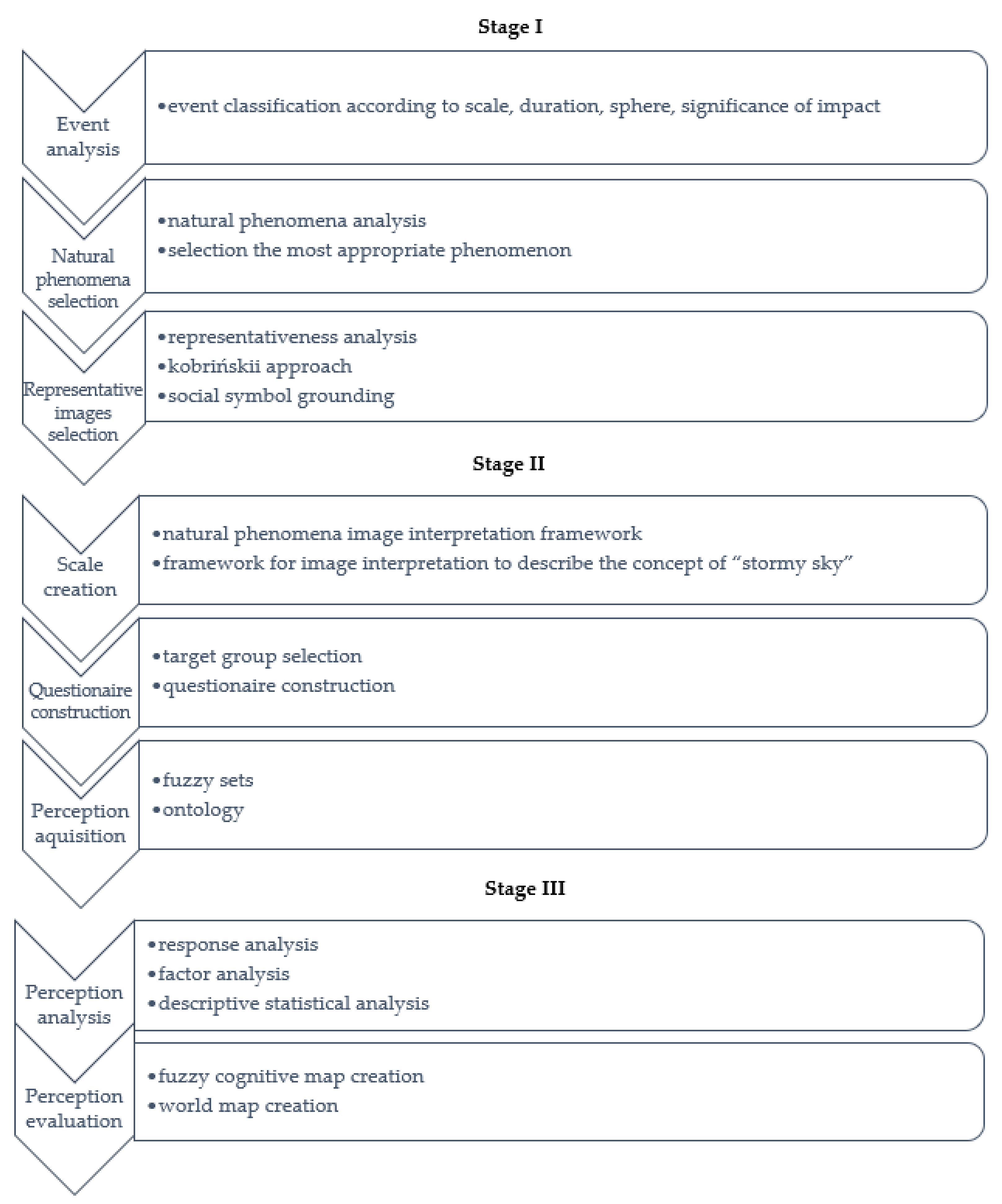


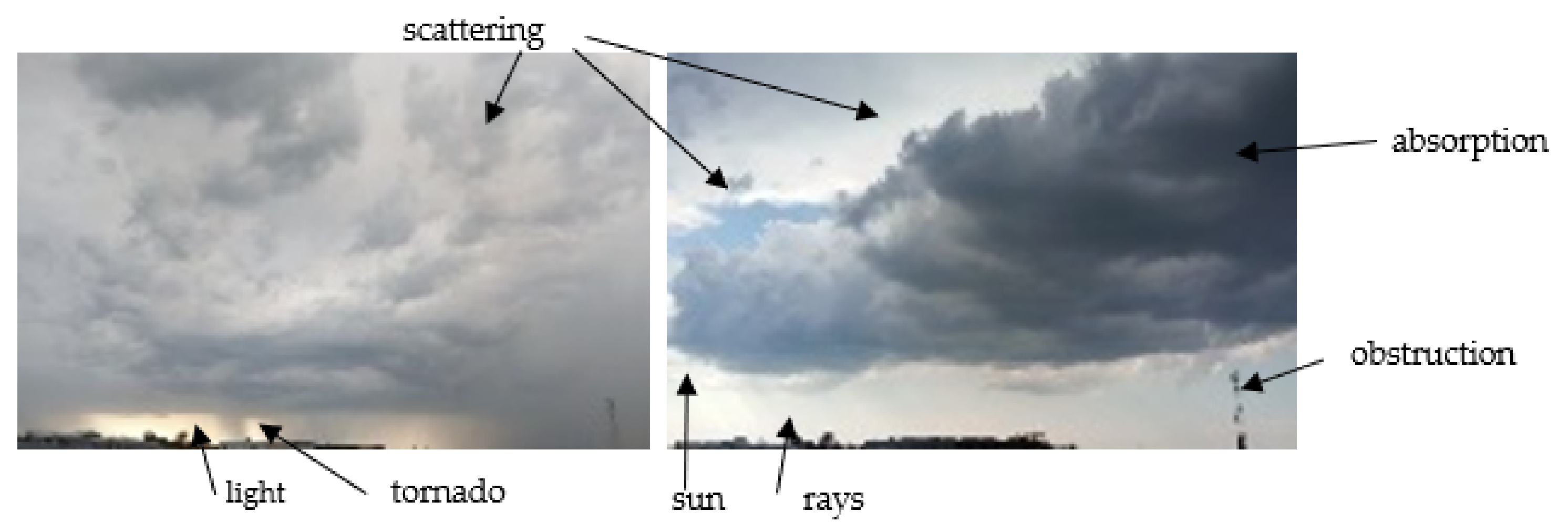

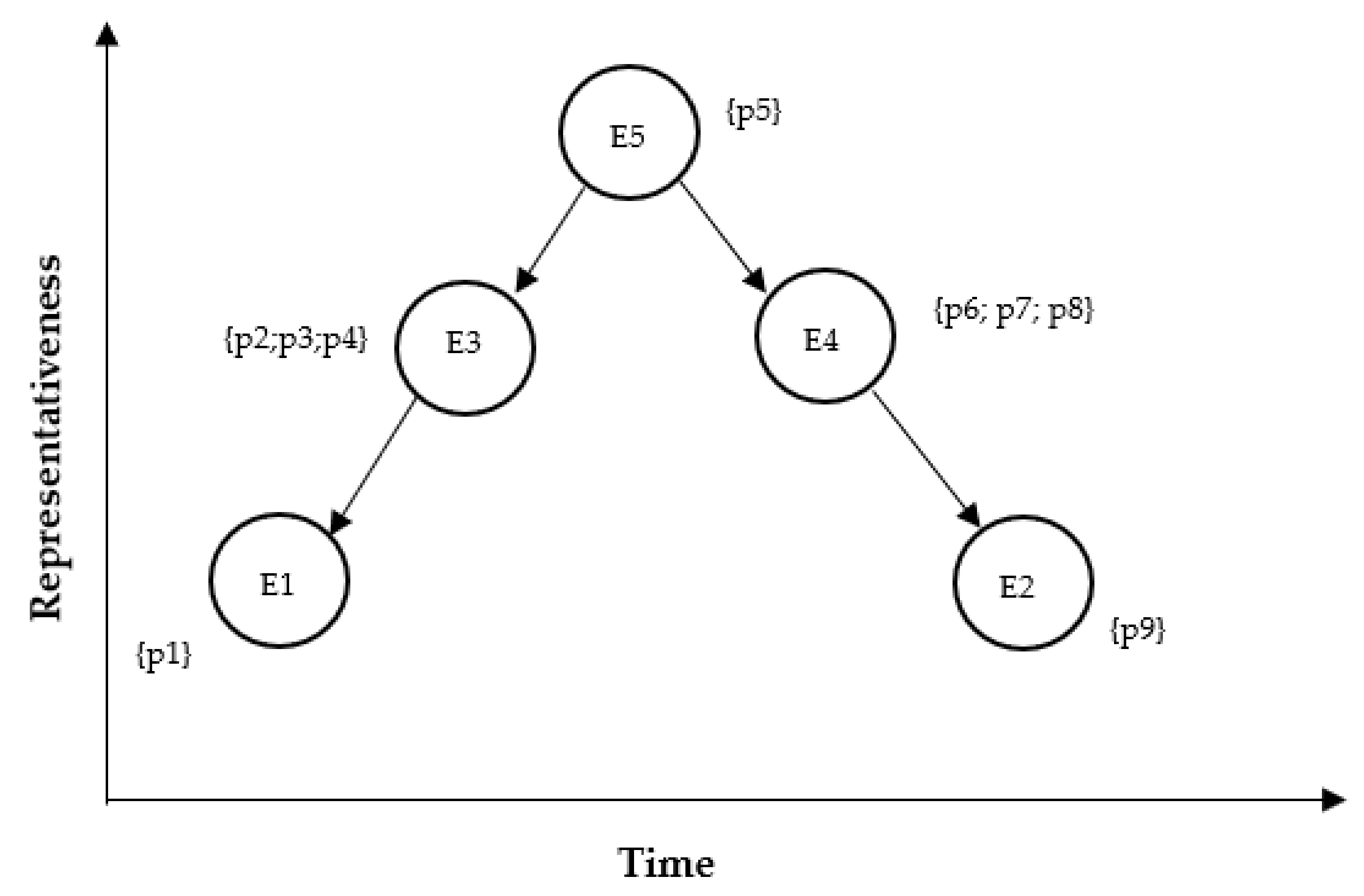
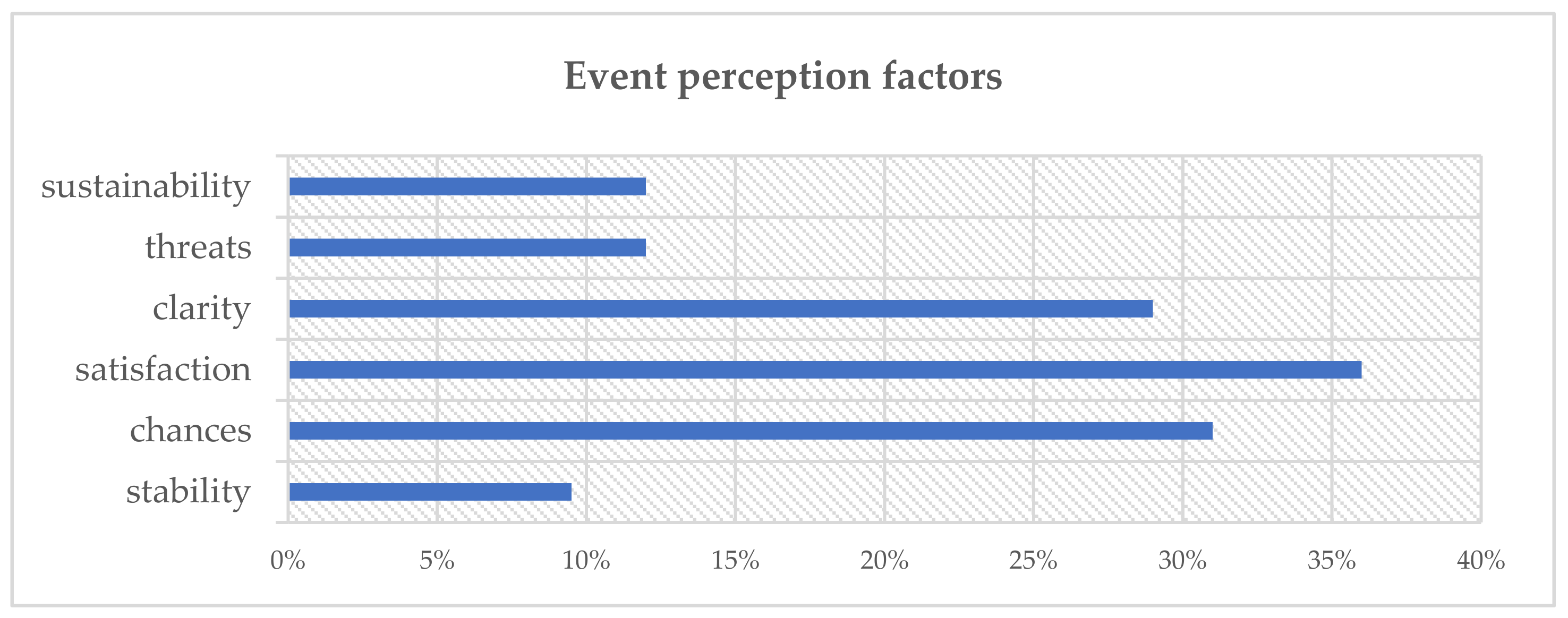

| Concept | Core Elements Used for Framework | Source |
|---|---|---|
| Economic Perspective | ||
| Event perception | “Events are key components of perception, attention, and memory”. The term event perception encompasses a range of phenomena involving the processing of temporally extended, dynamic information” [51], p. 1. “Perception–roughly hierarchical process in which sensory information is transformed into representations. Particularly important are representations of states of the world. The spatial and temporal boundaries of events also can be fuzzy” [17], p. 2. | [17,18,19,51,52,53,54] |
| Event management | “Event management refers to the targeting and managing of designed public events geared to invest emotional energies and economic resources to selected goals” [12], p. 1. | [12,13,14,15,16,58] |
| Event segmentation | “Event segmentation arises from the perceptual processing stream. In the visual modality, this corresponds to basic information about brightness, color, edge extraction” [17], p. 2. | [17], p. 2 |
| Sustainability | According to different scientific sources the concept of ‘sustainability’ includes the three interconnected groups of goals: economic, social, and environmental. These groups are presented and explained in literature in different way: mainly as the “pillars”, dimensions, etc. | [10,38,39,40,41,42,43,44,45,46,47,59] |
| Semantic Perspective | ||
| Ontology | “Knowledge representation in formal ontologies must approach experts’ cognitive semantics to capture how humans conceptualize geographic features” [60]. Ontologies used in the geographic domain may include spatial and/or temporal information [60]. Spatial reasoning can be defined as “the domain of spatial knowledge representation, in particular spatial relations between spatial entities, and of reasoning on these entities and relations” [61], p. 89. | [60], p. 926 [60], p. 918, [61,62] |
| Pictorial analysis | A multi-resolution data visualization approach for monitoring and diagnosis of complex systems. | [63] |
| Place semantics | Place semantics can be studied from thematic, spatial, and temporal perspectives or their combination [64]. “By combining space, time, and thematic topics to obtain a more comprehensive understanding on places and the associated events” [64]. “By combining time and theme, the evolution of topics over time could be explored, such as the emergence of new topics and the disappearance of old ones” [64]. | [64] |
| Landmark recognition | Landmark recognition method attempted to match landmark photos based on visual features, after filtering a set of images based on their location context. | [5,17,25,27] |
| Social symbol grounding | “Social symbol grounding refers to the ability to communicate with other systems by the creation of a shared lexicon of perceptually-grounded symbols” [60]. Scientists claim that cognition is embodied—that is, symbols must be grounded on perceptual, motoric, and emotional experience. The semantic image interpretation can be seen as a symbol grounding problem. In this context, ontologies provide a powerful framework to represent domain knowledge, concepts, and their relations, and to reason about them. The artificial intelligence is useful tool for symbol grounding. | [17,60,62] |
| Natural phenomenon perception and interpretation | Natural hazards are almost always associated with the risk and disaster. Most research is concentrated on risk/loss perception. The natural phenomena which could be used to describe the perception on global economic event should be selected depending on it scale, intensity, and risk level. It should be possible to describe development of this phenomena in time and space using the pictures. There are differences in perception of natural phenomena. Some groups are more vulnerable to climate change and extreme events, [66], p. 12519. | [65,66] |
| Cognitive Perspective | ||
| Response analysis | The response to the event has significant meaning for citizens. In the paper of Cai et al., the authors established an SEM of the associations among emotional response, cognitive response, and behavioral coping [67]. Firstly, emotional response as a respective factor for psychological health. Secondly, cognitive response consisted of paranoia and obsessive compulsion. The third area was the style of the population [67]. | [67] |
| Collective reaction | In 2019, Dankel et al. proposed the conceptual framework for study the collective reactions on the Brexit event with spatial images extracted from Flickr database. | [8] |
| Representativeness analysis | A common proposal in cognitive psychology is that people use representativeness, a similarity-based heuristic, to make these decisions. The image representativeness could be calculated. | [68] |
| Kobrinskii approach | In 2000 and 2008, Kobrinskii proposed the symbolic-image approach to knowledge base creation by using the symbolic ranges. According to his approach, the holistic picture created in mind has many related images which can be ranged according to associations and posted in the knowledgebase. | [69,70] |
| Spatial-temporal measurement scale | In 2019, Pilipczuk and Nowakowski have checked the possibility of using the spatial–temporal measurement scales with storm evolution images to study the citizen’s opinions on the current economic and technologic situation in Poland in 2018. The authors proved that this scale could be used for opinion acquisition. | [57] |
Publisher’s Note: MDPI stays neutral with regard to jurisdictional claims in published maps and institutional affiliations. |
© 2021 by the author. Licensee MDPI, Basel, Switzerland. This article is an open access article distributed under the terms and conditions of the Creative Commons Attribution (CC BY) license (https://creativecommons.org/licenses/by/4.0/).
Share and Cite
Pilipczuk, O. A Conceptual Framework for Large-Scale Event Perception Evaluation with Spatial-Temporal Scales in Sustainable Smart Cities. Sustainability 2021, 13, 5658. https://0-doi-org.brum.beds.ac.uk/10.3390/su13105658
Pilipczuk O. A Conceptual Framework for Large-Scale Event Perception Evaluation with Spatial-Temporal Scales in Sustainable Smart Cities. Sustainability. 2021; 13(10):5658. https://0-doi-org.brum.beds.ac.uk/10.3390/su13105658
Chicago/Turabian StylePilipczuk, Olga. 2021. "A Conceptual Framework for Large-Scale Event Perception Evaluation with Spatial-Temporal Scales in Sustainable Smart Cities" Sustainability 13, no. 10: 5658. https://0-doi-org.brum.beds.ac.uk/10.3390/su13105658






